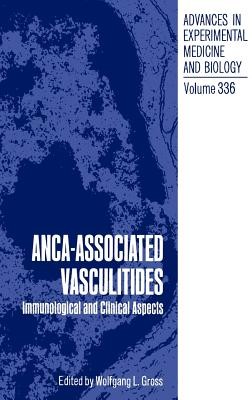
- We will send in 10–14 business days.
- Publisher: Springer
- ISBN-10: 0306445735
- ISBN-13: 9780306445736
- Format: 15.6 x 23.4 x 3.2 cm, hardcover
- Language: English
- SAVE -10% with code: EXTRA
Anca-Associated Vasculitides (e-book) (used book) | bookbook.eu
Reviews
Description
WEGENER'S GRANULOMATOSIS & ANCA-ASSOCIATED DISEASES: THE STORY CONTINUES The disease now designated as Wegener's granulomatosis (WG) was first described in 1931 by Heinz Klinger, who considered it to be a special form of polyarteritis nodosa. Klinger's friend, Friedrich Wegener, expanded on the first observations and interpreted the pathological and clinical fmdings to represent a distinct disease entity (Wegener, 1939). He described this entity as a "peculiar rhinogenous granulomatosis with a unique participation of the arterial system and the kidneys". Later, Godman and Churg (1954) established the classical diagnostic criteria (the "WG triad"): granuloma, vasculitis, and glomerulonephritis. In 1958 Walton pointed out the poor prognosis of WG based on a small number of published cases (mean survival time: 5 months). In 1966 Carrington and Liebow reported "limited forms" of WG with a defmitely more favorable prognosis. Since then positive results have been reported with cyclophosphamide therapy. In addition, a retrospective study of combined low-dose cyclophosphamide and prednisolone in 85 WG patients over a period of 21 years found a similarly encouraging outcome. The-latter experience led to the current "standard" treatment protocol (FAUCI et al., 1973 and 1983). More recently, strong evidence has emerged that some of the morbidity and mortality ofWG - and other types of systemic vasculitis - may be a consequence of this treatment (Hoffman et al., 1992).
EXTRA 10 % discount with code: EXTRA
The promotion ends in 17d.06:45:56
The discount code is valid when purchasing from 10 €. Discounts do not stack.
- Publisher: Springer
- ISBN-10: 0306445735
- ISBN-13: 9780306445736
- Format: 15.6 x 23.4 x 3.2 cm, hardcover
- Language: English English
WEGENER'S GRANULOMATOSIS & ANCA-ASSOCIATED DISEASES: THE STORY CONTINUES The disease now designated as Wegener's granulomatosis (WG) was first described in 1931 by Heinz Klinger, who considered it to be a special form of polyarteritis nodosa. Klinger's friend, Friedrich Wegener, expanded on the first observations and interpreted the pathological and clinical fmdings to represent a distinct disease entity (Wegener, 1939). He described this entity as a "peculiar rhinogenous granulomatosis with a unique participation of the arterial system and the kidneys". Later, Godman and Churg (1954) established the classical diagnostic criteria (the "WG triad"): granuloma, vasculitis, and glomerulonephritis. In 1958 Walton pointed out the poor prognosis of WG based on a small number of published cases (mean survival time: 5 months). In 1966 Carrington and Liebow reported "limited forms" of WG with a defmitely more favorable prognosis. Since then positive results have been reported with cyclophosphamide therapy. In addition, a retrospective study of combined low-dose cyclophosphamide and prednisolone in 85 WG patients over a period of 21 years found a similarly encouraging outcome. The-latter experience led to the current "standard" treatment protocol (FAUCI et al., 1973 and 1983). More recently, strong evidence has emerged that some of the morbidity and mortality ofWG - and other types of systemic vasculitis - may be a consequence of this treatment (Hoffman et al., 1992).


Reviews